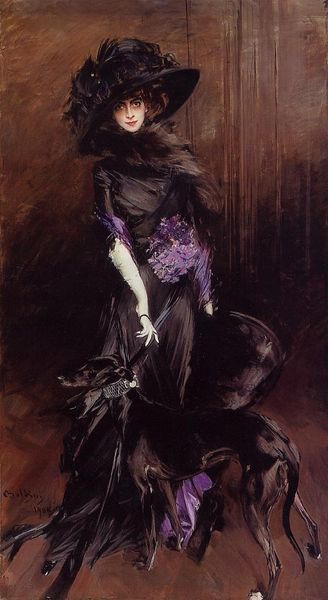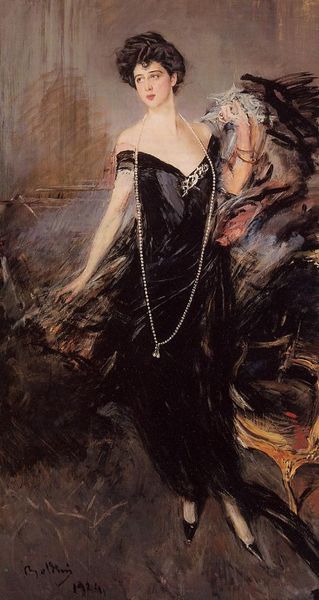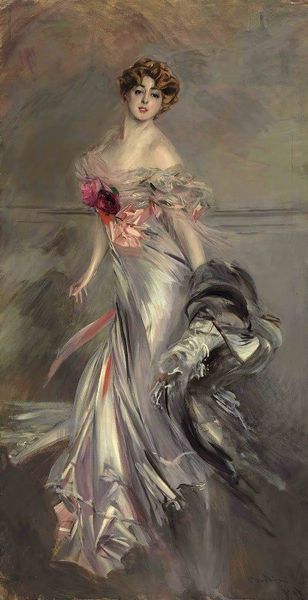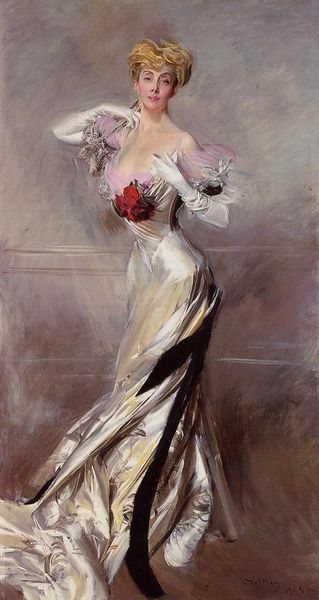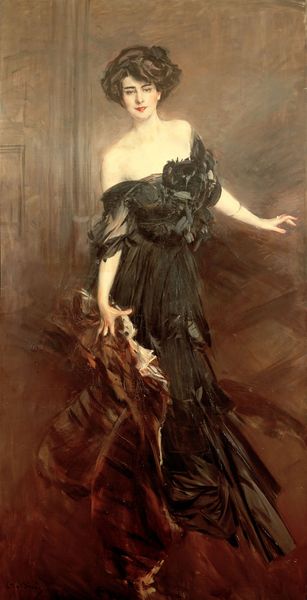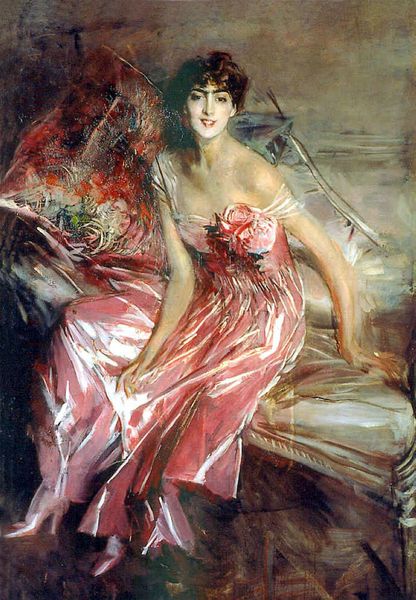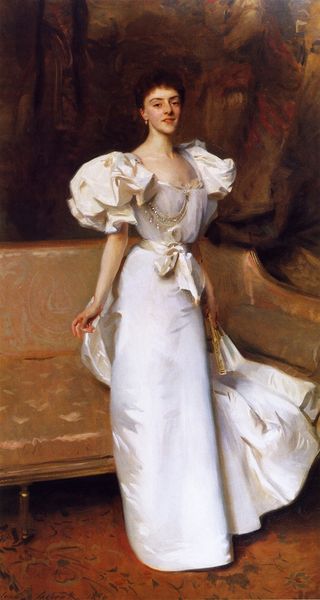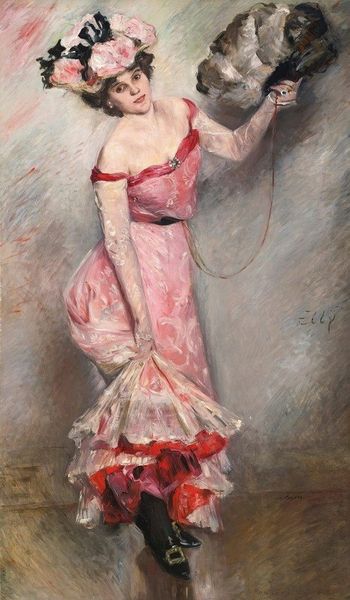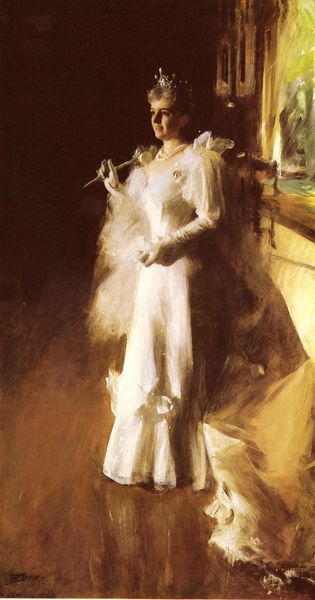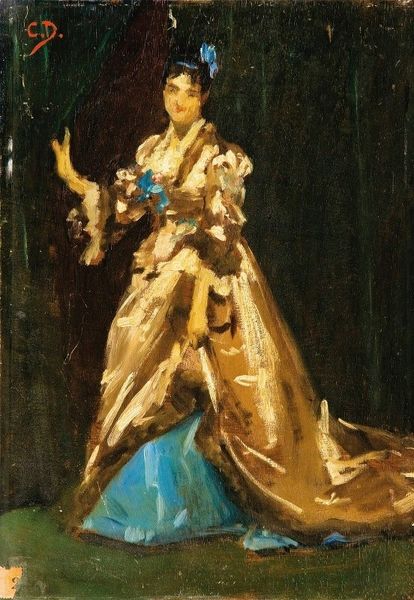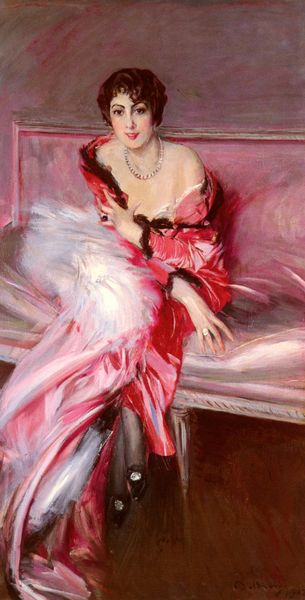
Copyright: Public domain
Giovanni Boldini painted "Portrait of Anita de la Ferie - The Spanish Dancer" around 1900 with oil on canvas. Boldini's painting presents Anita de la Ferie, a Spanish dancer, embodying the exoticism and theatricality that was fashionable at the time. This portrayal reflects a broader cultural phenomenon in Europe. The image creates meaning through the visual codes associated with Spanish identity: the flamboyant dress, the flower in her hair, and the theatrical pose. Boldini, working in France, captured the Belle Époque's fascination with other cultures, often romanticizing them. Yet, this orientalism raises important questions about cultural appropriation. To truly understand this painting, we could research the cultural context of the Belle Époque, the history of orientalism in art, and the performance culture of the time. We can then reflect on the meaning of the artwork and its role in perpetuating certain social norms.
Comments
No comments
Be the first to comment and join the conversation on the ultimate creative platform.
